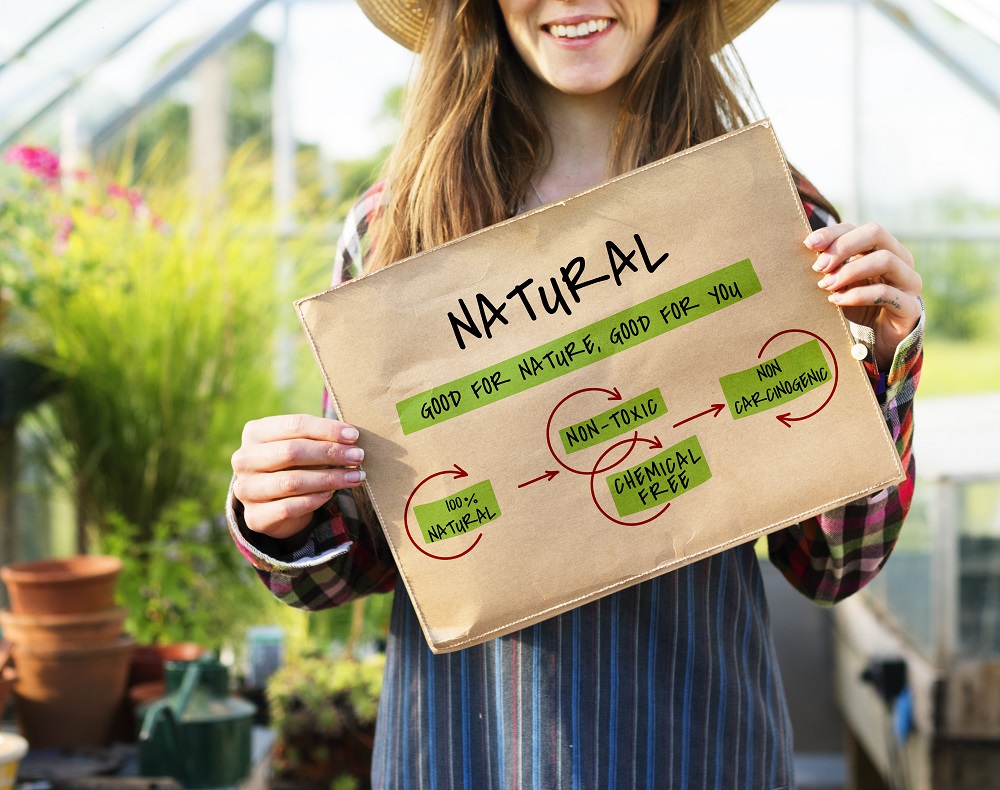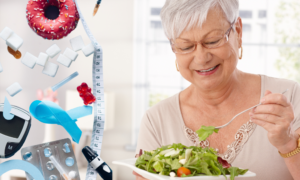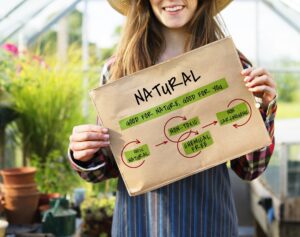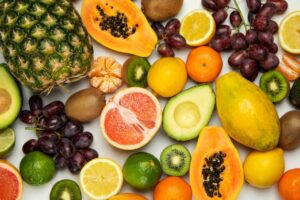Eating healthy, exercising and minimising stress are all important factors that will help us combat chronic disease and live a long and happy life. But lowering the level of our exposure to toxins can also play an important role in disease prevention.
Toxins as harmful substances are present in all aspects of our lives and can be underlying drivers of many health problems, including diabetes, heart disease, cancer and dementia (8).
There are many ways we can minimise our exposure to toxins and this article provides a practical guide that will help us understand why toxins are harmful for our health, identify sources of exposure and suggests how we can reduce exposure by using natural low-toxic products.
Our exposure to toxins
In reality, our modern lifestyles introduce us to sources of toxic substances. Toxins enter our bodies through air we breathe, the water we drink, the food we eat and through products we apply to our skin. We are exposed to toxins from food and food packaging, personal-care products and perfumes, clothing, cleaning products, home-building materials, house-hold furniture, pharmaceuticals, farming, agriculture and many other industrial activities (1,8,9).
Can toxins cause disease?
Toxins are harmful substances that are damaging to our bodies in many different ways. Toxins damage DNA, modify gene expressions and damage cell membranes and their signalling.
Toxins can effect critical bodily functions of enzymes, interfere with hormones and cause hormonal imbalances. They have damaging effect on our organs, decreasing their ability to function correctly and to remove toxins from the body. The higher our exposure to toxins, the more exposed we are to develop a chronic disease (8).
Our body's detoxofication system
Our body is designed to detoxify us from dangerous substances using a powerful detoxification system which works in three phases:
Phase 1 detoxification – The liver is the critical detoxification engine that is involved in this phase converting toxins and metals into less harmful chemicals.
Phase 2 detoxification – In this phase, the fat-soluble toxic substances are converted into water-soluble parts so they can be removed from the body.
Phase 3 detoxification – This involves the elimination phase where the substances are excreted from our bodies through our kidneys, our bowels and sweat through our skin.
The detoxification system is not always perfect and can get easily overburden due to various factors impacting the performance of the detoxification system. Being exposed to a large variety of toxins on a daily basis, eating poor diet (rich in processed food and low in antioxidants) and dealing with a lot of stress are combined factors that decrease the liver’s ability to clear toxins. When this happens, the toxins start accumulating in our body and negatively impact our health.
It’s important to minimize our exposure to unnecessary toxins so we reduce the workload on our detoxification systems so they don’t get overburden (1).
10 focus areas to a low toxin lifestyle
It can be overwhelming to make too many changes at once so consider focusing on one area at a time. Even a few adjustments will have a big difference for our health.
We have developed this practical guide with 10 focus areas of our life that may make the process of adopting a low-toxin life style easier.
1. Replace toxic personal care and beauty products with natural options
Consumer personal care and beauty products contain many synthetic ingredients that include harmful chemicals.
Our skin as the largest organ of the body absorbs approximately 70 % percent of the applied products so it is important that we know what we put on our skin. These products are often applied to our most sensitive areas of the body with pores that can absorb toxins in to our bodies.
Perfume fragrance
When buying personal care products, try to look for products that include essential oils instead of synthetic fragrances as they are natural oils with many healing properties. If you look for natural perfumes, One Seed Perfume is a great organic and 100% natural perfume that ticks all the boxes.
Synthetic perfumes contain phthalates that are linked to endocrine disruption, developmental and reproductive toxicity, and cancer. These synthetic fragrances may be listed as “fragrance” or “perfume” on the product’s label and are widely used in the industry (10).
Lotions, soaps and haircare products
Avoid moisturisers, lotions, soaps, body washes, and shampoos containing parabens and sulphates as they are hormone disrupters linked to increased risk of developing hormone-dependent cancer. Dr Bronner’s products and Acure skin and hair products are good chemical-free options.
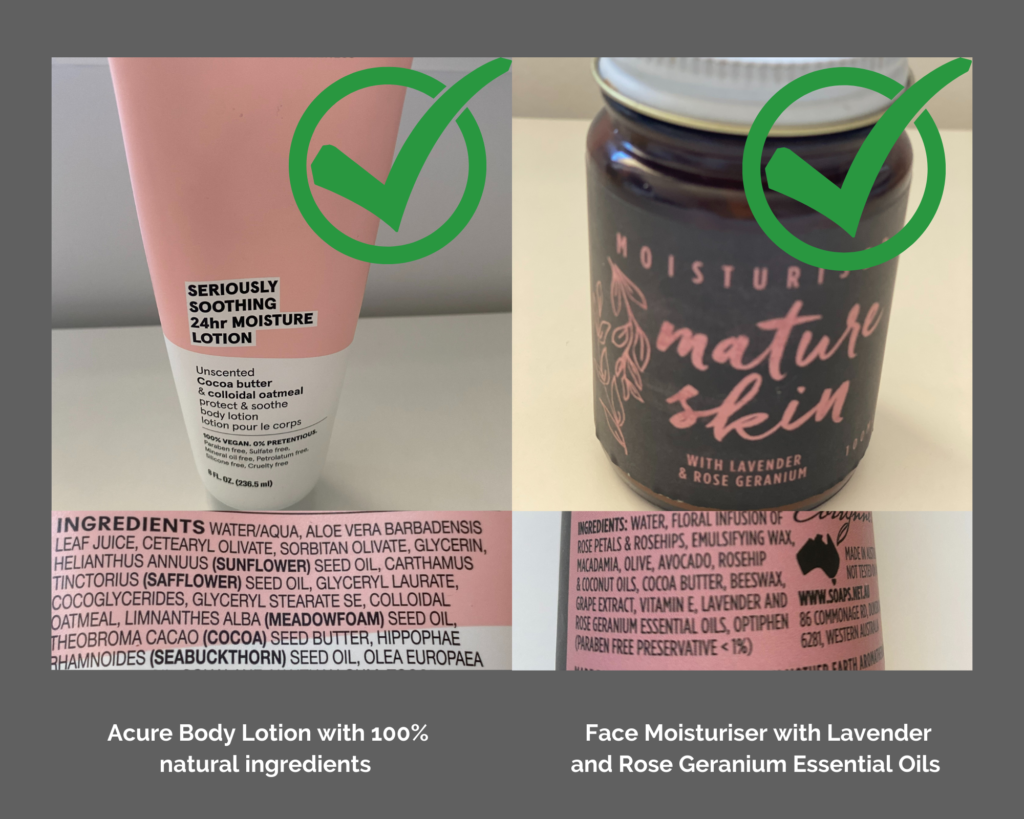
Toothpaste
We recommend to switch to a natural toothpaste to avoid fluoride, triclosan, mineral oils, propylene glycol and sulphates which are all harmful chemicals.
Sunscreens
To protect our skin against the sun’s harmful UV rays, ironically many sunscreens contain toxic chemicals like oxybenzone, homosalate and octinoxate that are toxic for our organs and are disruptive to our hormones.
There are many natural sunscreens on the market that avoid these harmful chemicals but they vary in texture, quality and effectiveness. The Life Basics Natural Sunscreen is a great product for sensitive skin that has a thinner non-greasy texture that can be easily applied to our face and body without leaving a white cast on our skin.
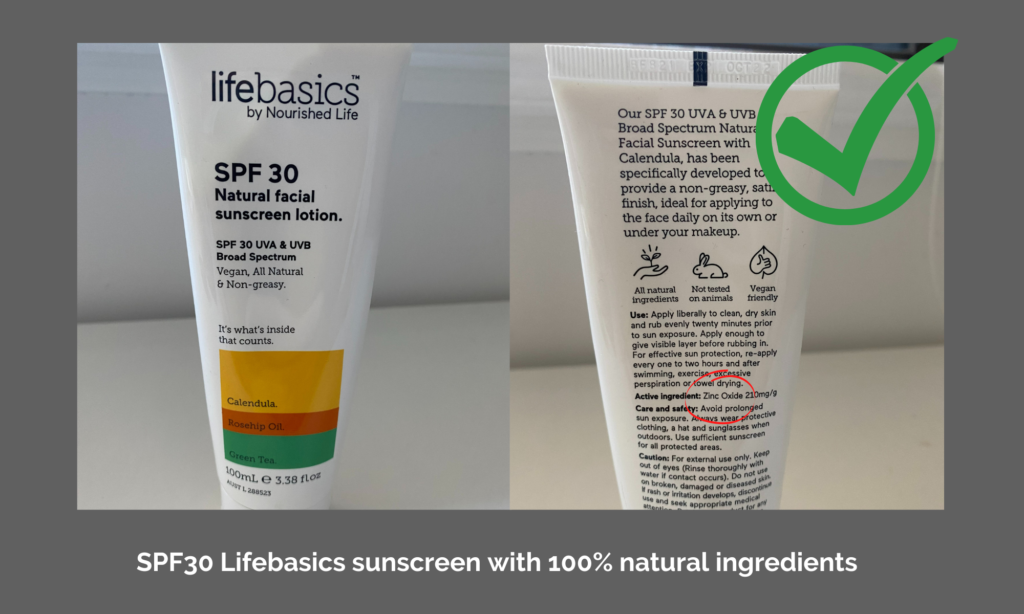
Make-up
Mainstream make-up products such as mascaras, eyeshadows, eyeliners, mascaras, lip glosses and lipsticks, mineral foundation and concealers may contain harmful chemicals that pose a risk to our health as we apply them on our face daily. These harmful chemicals may include phthalates, parabens, formaldehyde, formaldehyde releasers, mercury and thimerosal, carbon black, lead, PTFE, PFAS or PFOA (Fluoropolymers or Teflon), glycols, titanium dioxide, talcum powder and asbestos, and silicones.
As an alternative, there are many natural make-up alternatives on the market. INIKA and Eye of Horus are examples of good quality natural organic brands covering all make-up and skin care needs. If you want more options, the Nourished Life website is a great starting point that includes a large variety of natural skin care and beauty products under one roof.
2. Use natural cleaning products to avoid harmful chemicals
Cleaning products
Conventional cleaning products are one of the major sources of indoor pollution and are harmful to our health as they may contain many chemicals such as alcohol, ammonia, phosphates, bleach, added minerals, zeolite, lye, tallow, brightening agents, fillers, synthetic fragrances, artificial colours and more (2,3).
When we use these products for cleaning, the chemicals enter the body through skin and can be inhaled as vapours in the room. They can remain on the cleaned surfaces and become a source of a secondary exposure in the home.
There are now many natural cleaning products on the market that replace harmful chemicals with safer natural ingredients and are still able to achieve great cleaning results.
If you are located in Australia, try the Ecologic product range, Simply Clean products or Bosisto’s products. They all are excellent natural choices that will leave your house sparkling clean.
You can purchase them online or visit your local health food stores to check the range of natural cleaning products.
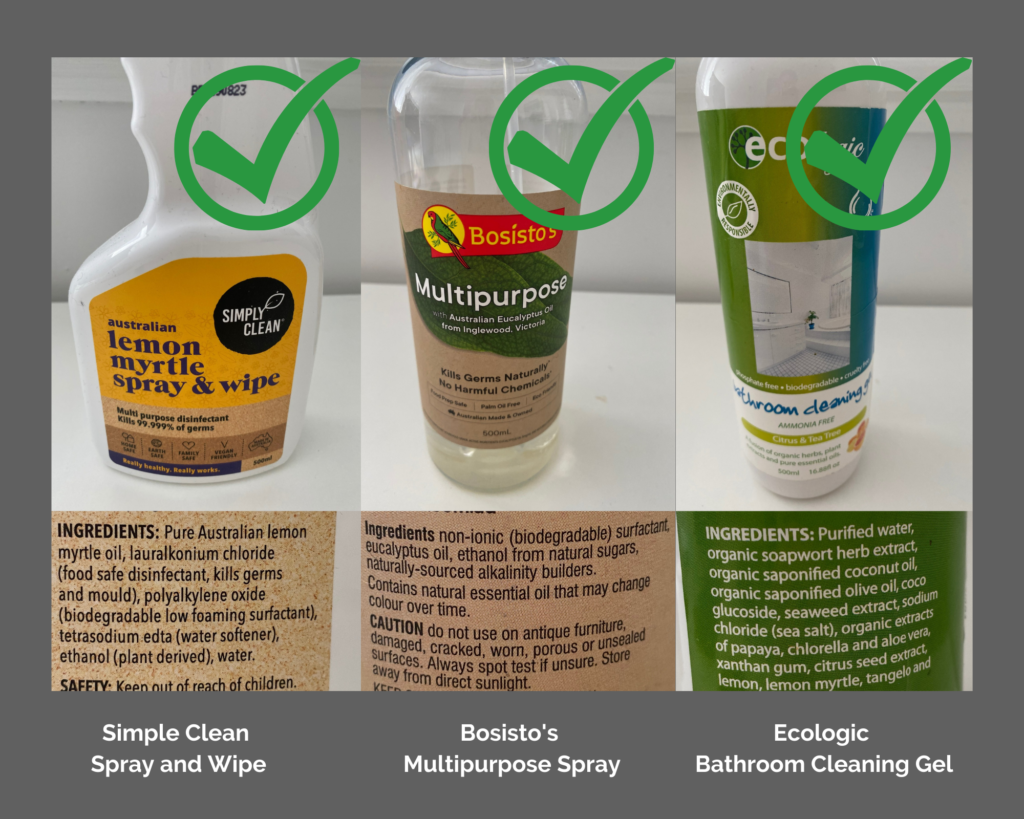
Laundry detergents
The main ingredients in many conventional laundry detergents is sodium lauryl sulfate and lauryl ether sulfate (SLS/ SLES). These are inflammatory chemicals for skin, eyes and lungs and can be damaging for our internal organs. Mainstream laundry detergents may also contain other harmful chemicals such as ammonia, bleaching and brightening agents, fillers, synthetic fragrances and artificial colour (4).
The Ecologic laundry liquid is one of the 100% natural laundry detergents on the market that is very effective for removing stains and also safe for our body and the planet. Ecologic supply their re-sellers like Dunn & Walton organic shop with refills so you can re-use your empty bottles to reduce waste packaging and get the products for a reduced price.
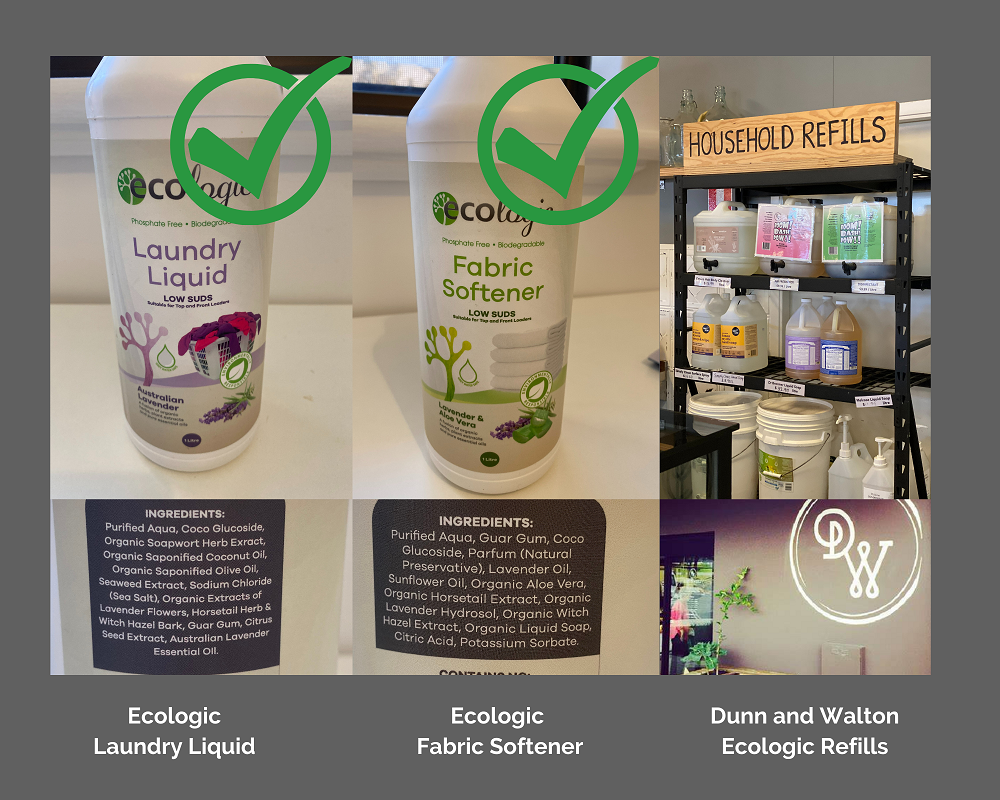
3. Ditch synthetic air-fresheners to protect your lunges
Air fresheners, scented candles and reed fragrances are common in many indoor public places and our homes. It’s important to understand why they are harmful to our body to minimize our exposure.
According to a study conducted by the Natural Resources Defense Council (NRDC), 86% of air fresheners tested contained phthalates. Airborne phthalates are associated with reproductive abnormalities, cause allergic symptoms and asthma and are under investigation for causing liver and kidney toxicity and cancer (13). Formaldehyde, napthalane and volatile organic compounds (VOcs) are other chemicals found in air-fresheners that lead to respiratory problems such as asthma and lunges tissue damage and are also link to cancer (14).
Diffusers with essential oils are a healthier alternative to refresh the air at our home and we can choose from many different essential oils that also have powerful healing properties. Air-purifiers are a great option for our home to remove unwanted odours and improve the quality of our air indoors.
You can’t beat the fresh air! If you don’t have an air-purifier, you can improve the quality of your air at home just by opening your windows regularly to let fresh air in and to keep your home well ventilated and by using digestion when cooking.
If you like candles, beeswax candles are 100% natural and are safer options to use around your home.
4. Say good-buy to chemical weed killes and pest sprays
Glyphosate is one of active ingredients in many weed killers, herbicides and pest sprays being used by farmers, agricultural workers and even by homeowners in their gardens. In some countries, the use of glyphosate has been banned as many studies found association between the use of glyphosate and cancer (1). In Australia, the use of glyphosate is wide spread and local councils still use it to treat local parks.
Be cautious when you see a warning sign in your local area that glyphosate is being applied. Avoid contact with the grass for at least a few days, especially if you have children and pets. To find out the council’s spraying schedule in advance, ring your local council and avoid the parks during these times.
Avoid using weed killers and pest prays in your own garden and look for natural alternatives like Bioweed and natural DIY weed killer solutions.
5. Reduce plastics
Plastic is a petroleum-based byproduct that affects human health and harms the planet. The exposure to plastics has been linked to cancer, birth defects, weekend immunity and hormonal problems. In particular, plastics that contain BPA and phthalates should be avoided as they contain harmful toxins (9,10).
To limit the use of plastics in your kitchen, replace plastic containers with glass jars, avoid using plastic wraps, plastics food packaging, plastics bags, plastic kitchenware and bottles. For wrapping try to use reusable beeswax wraps and mesh produce bags when shopping for fruit and vegetables.
6. Choose your clothing and bedding wisely
The clothes we wear and the bedding we sleep in is another source of harmful chemicals. Textile manufacturers use chemical finishes to improve the wearability, appearance and functionality of the material. Typically, new clothes and bedding are soaked with formaldehyde and fungicide to create easy finish without wrinkling and to reduce the growth of mold during transportation. Most fabrics made from synthetic fibres (polyester, acrylic, raylon, nylon, polyester, acetate and triacetate) are produced with toxic chemicals and are coloured with azo-aniline dyes causing skin reactions (1,9,10).
To reduce your exposure, look for natural materials such as wool, flax, silk, cotton, bamboo and hemp. Organic cotton is the best option with no pesticides and insecticides used.
Before first use, always make sure to wash your new clothes / bedding to remove formaldehyde and other chemicals present on the fabric.
When shopping for new clothes, look for organic brands. For example, Bhumi Organic Cotton, Ettitude and Boody are organic eco-friendly bedding and clothing brands where the highest quality of materials are used.
7. Eat more plants to avoid environmental toxins
Dioxines and PCBs are toxic harmful environmental toxins that accumulate in the fatty tissue of animal products and dairy that can cause cancer, reproductive problems, damage immune system and may interfere with hormones (11,12).
In addition, factory-farmed animals including farmed-fish are often injected with antibiotics and hormones and fed with GMO foods. Wild fish is polluted with mercury, especially tuna, swordfish, shark and king mackerel.
The best way to minimize our exposure to toxins in food is to eat less animal fat and eat more healthy fats from avocado, raw nuts, seeds. Eating plant-rich diet lower on the food chain will help us significantly reduce the intake of industrial chemicals and hormone disrupter (11, 12).
8. Hydrate with clean fresh water
Council supplied municipal ‘tap’ water contain chemicals like chlorine and fluoride that are added to kill bacteria and other organisms. Chlorine is disruptive to our immune system and can cause respiratory problems, including asthma and pneumonia. Tap water also contains other contaminates such as lead, copper, industrial chemicals and sewage (1).
Water is an essential element for our body and so it’s important to filter the drinking water to hydrate our body with clean fresh water. To filter your drinking water, consider benchtop water filters such as waters or invest into the complete home filtration system that will filter all your household water. If practical, consider filtering all of the household water that is used for your kitchen, cooking and bathroom to further minimize your family’s exposure to chemicals.
9. Replace your cookware with more eco-friendly options
Many non-stick coatings used for frying pans, saucepans, sandwich presses and slow cookers use a teflon coating which can be a carcinogen and disruptive to hormones and the reproductive system.
In addition, metals that are used for cookware such as aluminium and stainless-steel can release nickel, arsenic and cadmium when we cook and can be absorbed in our food during cooking (9,10).
It’s important to look for safer options as we use cookware every day. The best option is ceramic non-stick coating free of PFAS, PFOA, lead and cadmium such as GREENPAN, nickel-free stainless steel cookware, cast-iron cookware and glass bakeware.
10. Reduce your EMF exposure
While they are not toxic chemicals, electromagnetic fields (EMF) can create free radicals that result in DNA damage and lower our immunity, leaving us exposed to a higher risk of developing a disease (15). Sources of EMFs in the home and our daily lives include WIFI devices, appliances, medical scanning machines (e.g. x-rays, CT) (1).
We cannot completely avoid exposure to EMFs in our modern lives but we can lower our exposure by turning off our WI-FI at night and leaving our mobile phones out of our bedroom.
Are our products safe?
It takes effort to minimise our exposure to toxic chemicals.
With thousands of consumer products on the market it can be very tricky and time consuming to know which products are safer natural options. Here are three easy tips how to choose a healthier product:
TIP 1 - Read labels
Product labelling can be misleading so always read the ingredient list on the back of the product packaging. Avoid products that use synthetic fragrances, parabens, sulphates and other ingredients mentioned in this article.
TIP 2 - Follow consumer guides
Follow consumer guides like the EWG group that is on a mission to empower consumers to make informed choices to live a healthy life. On their website you can find personal care, cleaning and baby products that have been EWG verified so you can be sure they are free of harmful chemicals. You can also use their EWG’s Skin Deep database to verify what ingredients are used in the brand or products chosen.
TIP 3 - Eco-shopping
Shop in eco-friendly places where you have some guarantee that they stock only natural chemical-free products.
Health shops like Go Vita Health Stores stock a large variety of chemical-free products that are all on display in their shop and their staff is always happy to give advice.
For online shopping, the Nourished Life is a one-stop shop to get everything you need for chemical-free home and beauty products. All their products have been carefully selected to be 100% natural and their consumer guides and reviews are a handy tool to assist you with choosing the right product for your needs.
Summary
We hope that this practical guide to low-tox life will help you uncover the hidden danger of toxins in your life and to make better choices so you can protect yourself against developing a chronic disease.
Just remember that this is not about perfection and it does take effort. Take it one small change at a time and before you know it you will live a low-toxin lifestyle!
References
- Chris Wark, Chris Beat Cancer, 2018, USA
- Identifying Greener Cleaning Products | US EPA
- https://www.bigbluewaves.net/avoid-toxic-cleaning-chemicals/
- 13 Chemicals in Laundry Detergent & How to Avoid Them! (naturallivingfamily.com)
- https://www.allergystandards.com/news_events/chemicals-in-textiles-and-the-health-implications/
- https://naturalsociety.com/chemical-clothing-toxic-chemicals-clothes-sick/
- The Dangers of Tap Water – The Health Wyze Report
- Dr Joseph Pizzorno, The Toxin Solution, 2017, New York, USA
- Dr Kristi Funk, Breasts The Owner’s Manual, 2018, London, UK
- Alexx Stuart, Low Tox Life, 2018, Australia
- Joel Fuhrman MD, Disease-proof your child, 2005, New York, USA
- Michael Greger MD, How not to die, 2015, UK
- Natural Resources Defence Council: Fair Fresheners: https://www.nrdc.org/sites/default/files/fairfresheners.pdf, 2017
- MadeSafe 2020, Toxic Chemicals in Air Fresheners, https://www.madesafe.org/toxic-chemicals-in-air-fresheners
- Samual Milham MPH MD, Dirty Electricity, 2010, New York, USA


